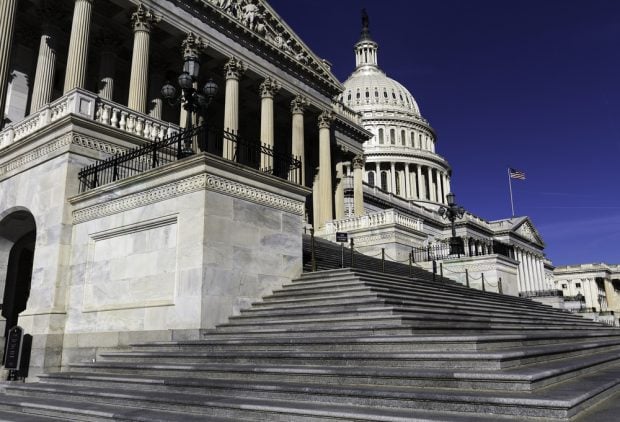The Consumer Financial Protection Bureau has launched a requestfor information and inquiry into checking account overdraftprograms to determine how these programs and practices impactconsumers.
|As part of that inquiry, the CFPB is seekingpublic input regarding overdraft programs and their costs,benefits, and risks to consumers. Furthermore, the bureau isexamining the policies and practices of the largest banks to see ifadditional regulation is necessary.
|Depending on the findings, income from overdrafts could be underthreat. Additionally, CongresswomenCarolyn B. Maloney representing New York State's14th Congressional District, along with many of herDemocratic colleagues, have introduced the Overdraft Protection Actof 2012, H.R. 5691.
|According to the congresswomen she has introduced overdraftprotection legislation in each Congress since 2005. This newlegislation differs from those earlier bills by directing theConsumer Financial Protection Bureau to study pre-paid cardoverdraft programs and limiting the number of overdraft fees aconsumer can incur.
|Back in 2005, an FDIC guidance “reaffirmed” a best practicesdocument containing specific risk-mitigation techniques it expectedits regulated banks to implement.
|Herein are some specific risk-mitigation techniques:
- The board of directors is expected be involved with its ODPprogram. Expected is regular oversight including an annual boardreview of an ODP program's key features.
- Reviewing ODP advertising to minimize confusion and to promoteresponsible use.
- Monitor programs for excessive or chronic customer use. What isabuse? When a customer overdraws the account on more than sixoccasions where a fee is charged in a rolling 12-month period. Ifand when that occurs, the bank must undertake “meaningful andeffective” follow-up action, which may include, for example:
- |
- Contacting the customer to discuss less costly alternatives;and
- Giving the customer a reasonable opportunity to decide whetherto continue fee-based ODP coverage or choose another availablealternative.
- Instituting appropriate daily limits on customer costs by, asan example, limiting the number of transactions that will besubject to a fee or providing a dollar limit on the total fees thatwill be imposed per day.
- Considering the elimination of overdraft fees for transactionsthat overdraw an account by a small amount.
- Considering the use of cost effective, existing technology, asappropriate (e.g., text message, e-mail, telephone or mobiledevice) to alert customers when their account balance is at risk ofgenerating a fee for non-sufficient funds.
- Reviewing check-clearingprocedures and any third-party vendor to ensure they operate in amanner that avoids maximizing customer overdrafts and related feesthrough the clearing order.
The FDIC expected those affected institutions to have their newrisk-mitigation techniques in place by July 1, 2011.
|If your credit union earns income from an ODP program, thatincome could become at risk. How much is at risk is yet to bedetermined, but one may want to consider the following.
- How much ODP income do you receive from smaller transactions?If the small dollar amount transaction cutoff for fees takeseffect, ODP fees from those transactions could go away. What is theimpact?
- How much ODP income do you earn from consumers who are chargedmore than six ODP fees in any 12-month rolling period? If thisapplied to you, you'd have to reach out to them and show themalternatives. Let's say only 10% of those consumers opted out ofyour ODP program. How much money would that be?
- Do you clear items from largest to smallest in terms of dollaramount? If you had to clear items based on the order received or bycheck number, how might that affect your income?
- Imagine you implemented a daily limit of $25 or $50 for ODPprograms. How would that have affected your income this year and inthe future?
Credit unions are member-centric organizations. It may beprudent for those with an ODP program begin to develop and deployseveral of the risk-mitigation techniques above if they alreadyhave not. That said, it is widely anticipated many of us will berevisiting this area once again.
|EdwardLis is vice president of finance at Fulton County FederalCredit Union in Gloversville, N.Y.
Complete your profile to continue reading and get FREE access to CUTimes.com, part of your ALM digital membership.
Your access to unlimited CUTimes.com content isn’t changing.
Once you are an ALM digital member, you’ll receive:
- Critical CUTimes.com information including comprehensive product and service provider listings via the Marketplace Directory, CU Careers, resources from industry leaders, webcasts, and breaking news, analysis and more with our informative Newsletters.
- Exclusive discounts on ALM and CU Times events.
- Access to other award-winning ALM websites including Law.com and GlobeSt.com.
Already have an account? Sign In
© 2024 ALM Global, LLC, All Rights Reserved. Request academic re-use from www.copyright.com. All other uses, submit a request to [email protected]. For more information visit Asset & Logo Licensing.









